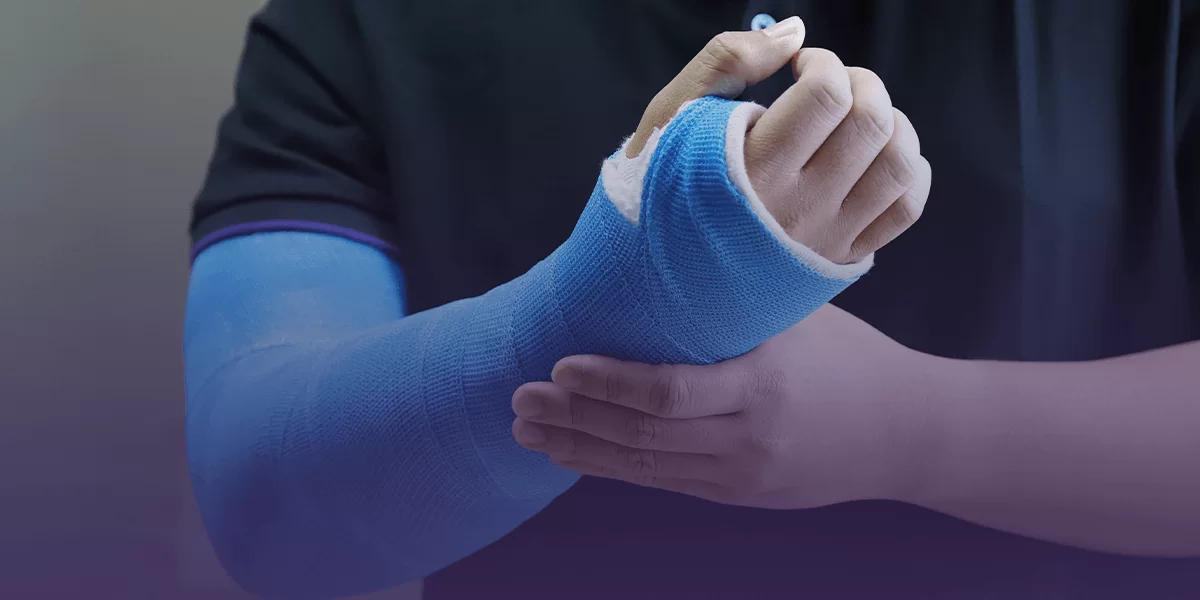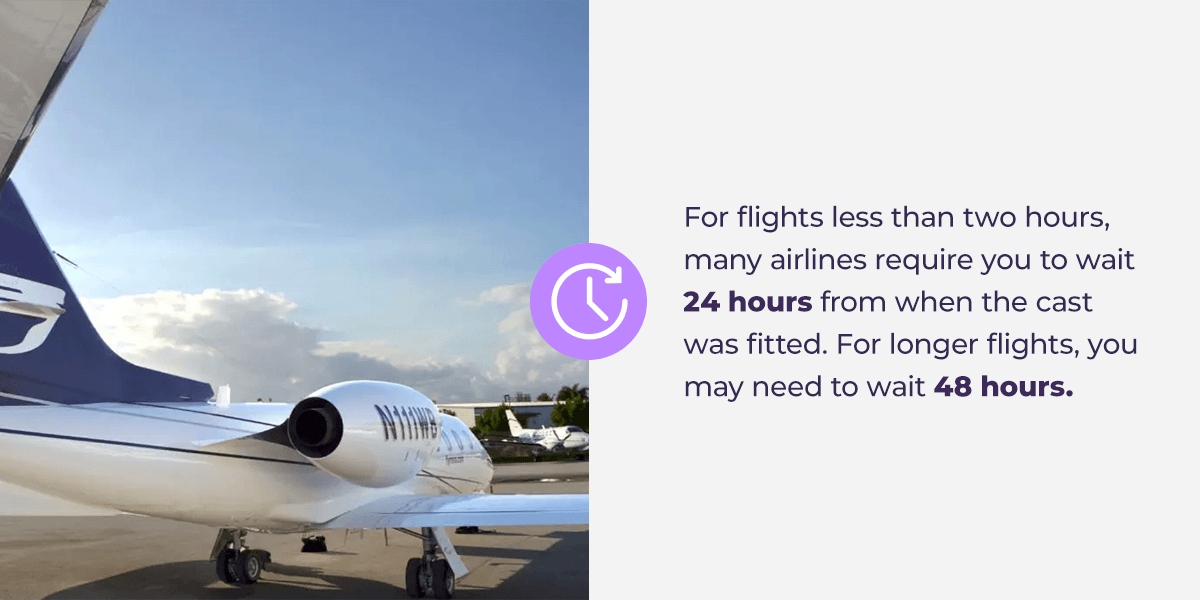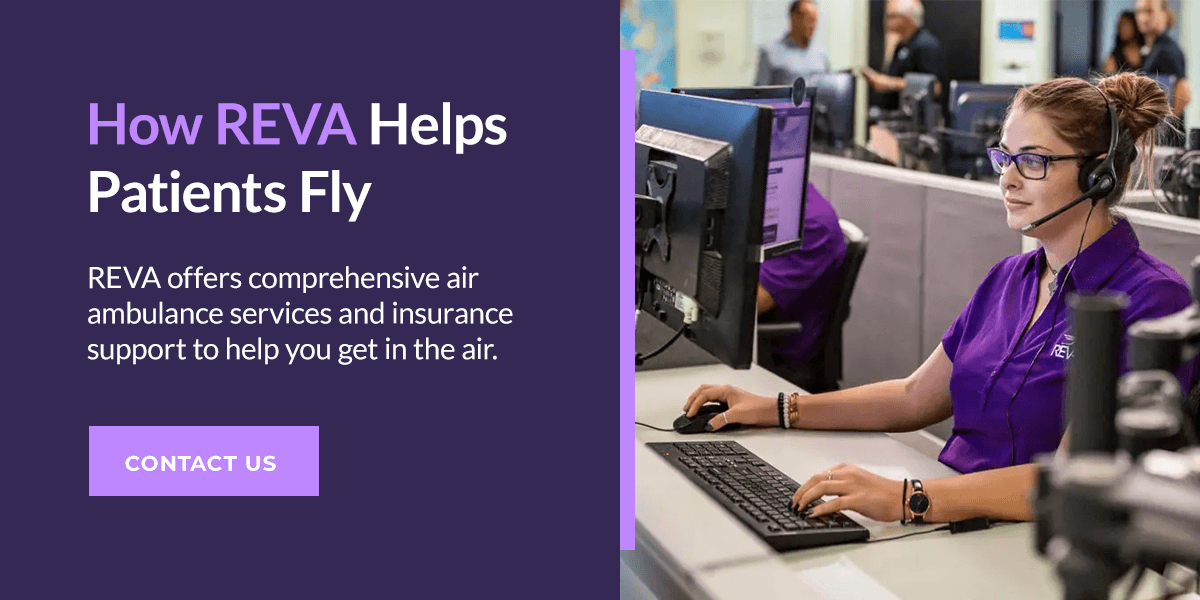If you or a travel partner has recently had a cast put on, it might hamper your travel plans. Flying can cause changes to blood flow, and a cast can prevent these changes from occurring properly. Without the right precautions, flying with a cast can lead to significant health complications. Some kinds of casts even make it impossible to fly in a normal seat.
Understanding the limitations of a cast and what you need to do to stay safe can help you avoid any unpleasant interruptions to your flight.
Are You Allowed to Fly With a Cast?
The answer to this question depends on when you got the cast put on, how long your flight is and who’s operating the flight. For flights less than two hours, many airlines require you to wait 24 hours from when the cast was fitted. For longer flights, you may need to wait 48 hours. Every airline is different, so check with your flight operator to see their requirements.
A plaster cast may also need to be split before your flight. Splitting a cast involves cutting along its length to relieve pressure or remove the cast. Then, the cast is held together using medical tape. It can be loosened and tightened as needed. Some casts may need replacements after splitting, but many can stay split. However, you’ll likely need refitting when you land.
Even if your airline doesn’t require splitting the cast, it is often a good idea. Always talk to your provider before flying with a cast.
What Happens if You Fly With a Cast?
Airlines and providers take these precautions to prevent complications from swelling and immobilization for long periods. Potential problems include:
- Circulation issues: Swelling often occurs during flights because you sit still for long periods, so blood starts to pool in your legs and feet. Fluid can leave the blood and move to soft tissues, causing swelling. When your limb is in a rigid cast, this swelling can restrict circulation and increase pressure. If you’ve recently had a cast put on, you may already be prone to swelling, so limiting additional stressors is important.
- Compartment syndrome: Increased pressure, such as from swelling, can also lead to compartment syndrome, a serious and painful health issue in which the blood flow is so restricted that it can’t reach muscles and nerves. If the pressure isn’t relieved quickly, compartment syndrome can cause permanent tissue death.
- Blood clots and deep-vein thrombosis (DVT): Blood clots are a common concern for people who take long-distance flights and have certain risk factors. DVT happens when these clots occur in deep veins, which are deeper in the body and not visible through the skin. A lack of movement for long periods can cause blood clots and DVT, potentially leading to more serious conditions like a pulmonary embolism.
If you have surgery before getting your cast, you’ll also need to consider the waiting periods for your procedure. For example, a laparoscopic or keyhole surgery may only require waiting a few days before you can fly, but simple abdominal surgery might require four or five days. Every situation is different, so talk to your doctor first.
Do You Need an Extra Seat If You Fly With a Cast?
Depending on your airline, you may need to pay for an extra seat or make special arrangements to accommodate your cast. You can typically have plaster casts in one of three areas:
- Upper extremities: A plaster cast might cover your hand, wrist or arm but leave your fingers and thumb free. They may go over the elbow or just cover your forearm.
- Lower extremities: These casts cover your foot and leg. Some stop at the knee, while others cover your whole leg up to the hip.
- Body: A whole-body cast would cover your midsection and some limbs. It can reach the neck and even cover your head.
You can likely travel in a normal seat if you have a cast only on your upper extremities. You may also be able to use a normal seat if you can bend your knee with a lower-extremity cast. If you cannot bend your knee, some airlines will allow you to buy additional seats to rest your leg or body. A seat with extra legroom could also work, but you can’t take the exit row because the person in this spot would need to assist during an emergency.
If none of these options apply, you can arrange for a private medical flight or a medical escort
How to Get a Flight if You Have a Cast
Even with a lower-extremity or body cast, you might be able to get on a commercial flight with the help of a medical escort. You could sit in a seat with more room or use a commercial stretcher. The stretcher option involves replacing a row of seats with a stretcher. Your medical escort can help with logistics, first aid, pain management, and emergency care if you start having problems.
For more intense medical demands, such as patients with severe illnesses or complex fractures, an air ambulance can help them reach their destination with a specially outfitted cabin designed for medical care. These flights include all the necessary equipment for responding to problems that might occur, such as concerns about DVT or a clot. They also offer the appropriate space for securely holding someone in lower-extremity or full-body casts.
During an air ambulance flight, you’ll have a medical team assisting you if you notice problems with your cast, like pain or swelling. They can also help with advanced problems related to other medical issues, such as complications from a recent surgery. Air ambulance flights do not have any other passengers aside from any travel companions you bring with you. If you need transport to another medical facility, they can get you there, too.
Will Insurance Pay for a Medical Flight If You Have a Cast?
Both health and travel insurance policies can cover air ambulance flights, but usually only if the trip is medically necessary. Even if you have a recommendation from a doctor, the insurance company could still refuse coverage. Check your policy carefully before booking.
Insurance conversations can be difficult, especially if you’re in a stressful health situation, so consider working with an air ambulance provider who can talk to insurance companies for you. A provider with in-network insurance companies can also simplify coverage.
How REVA Helps Patients Fly
Having a cast shouldn’t prevent you from getting where you need to be. REVA offers comprehensive air ambulance services and insurance support to help you get in the air. Our medical and flight teams have extensive training and go beyond industry standards to deliver high-quality care. We offer domestic and international air ambulance flights, and we’ll work with your insurance company to help you get covered. We’re even in-network with companies like Humana and Blue Cross Blue Shield of Florida.
If you need to arrange a flight for someone with a cast, reach out to us today to get a quote or discuss your options.



